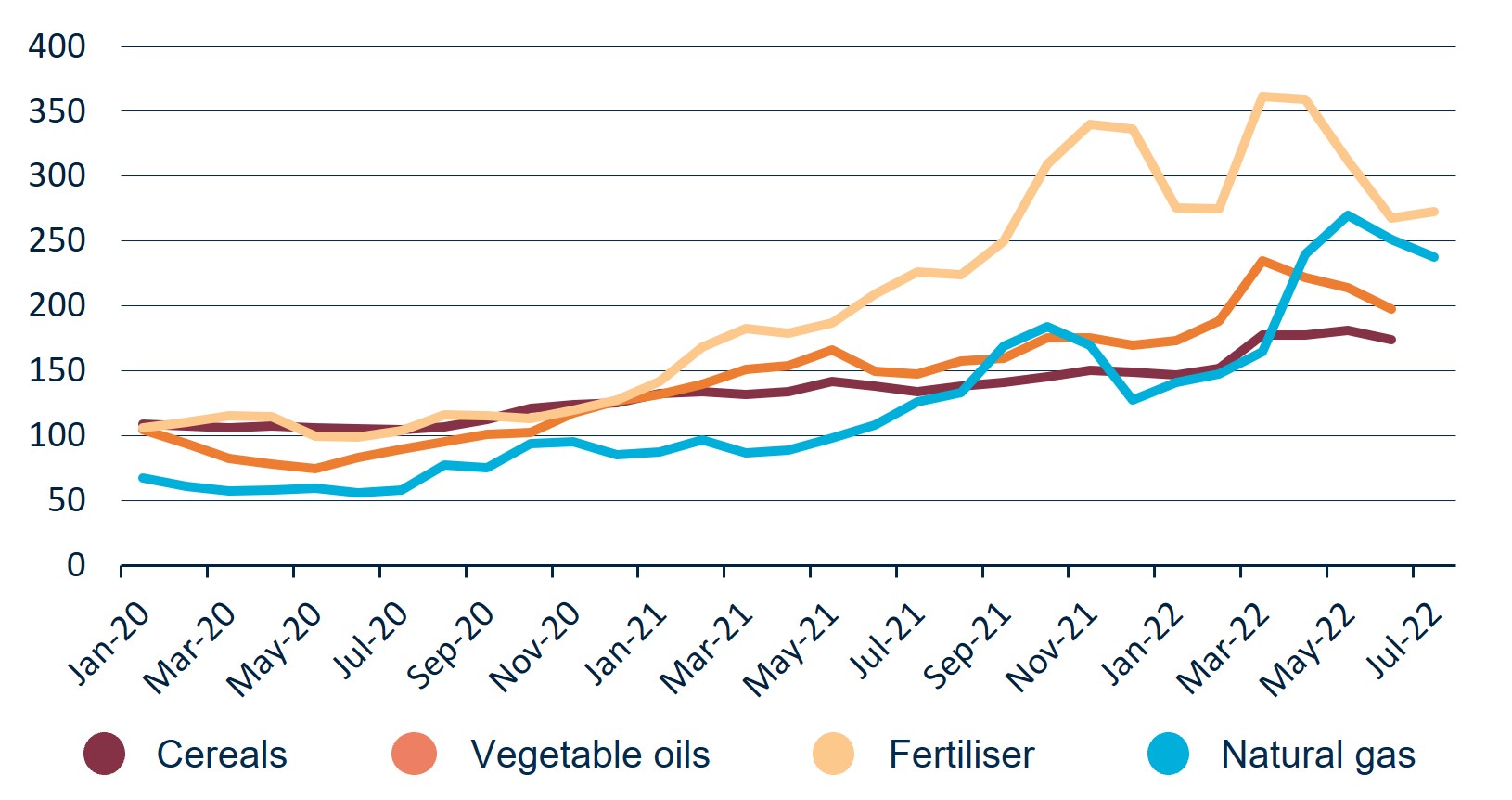High global food prices and uncertainty about future food supplies is driving an increase in the number of countries implementing food export restrictions. This raises global food security concerns.
Food export restrictions rise in 2022
- Since the beginning of 2022, 32 countries have imposed export restrictions on food and fertiliser. Twenty-six of these countries still have active restrictions.
- This is the highest number of countries implementing restrictions since the 2008 food price crisis.
- Export restrictions are intended to increase the supply of food in an exporting country. However, the implementation of restrictions by one country can cause others to also introduce restrictions.
- This can cause an upward spiral of restrictions, prices and volatility.
Figure 1: Number of countries with active food export restrictions
Retrieved July 2022
Drivers of export restrictions
- Poor seasonal conditions in much of the Northern Hemisphere, disruptions to food exports from Ukraine and Russia, and high energy and fertiliser costs are driving food prices to record levels.
- High prices and uncertainty about future supply is leading some governments to implement export restrictions.
- Russia’s invasion of Ukraine has disrupted the production and export of key staple products, including wheat and sunflower oil.
- Consecutive La Niña events have reduced crop output in the EU and US.
- Prices received by farmers have increased, but input costs, including fertiliser and fuel, have also risen.
Figure 2: Price indices January 2020 - July 2022
January 2017=0
Food, fertiliser and natural gas prices rise together
- Figure 2 shows the relative price increases of cereals, vegetable oils, fertiliser and natural gas.
- Commodity prices are closely related. For example, fertiliser production requires natural gas. The rising cost of fertiliser production then has flow-on effects on the price of food.
Outlook for export restrictions
- Food export restrictions are currently having the largest direct effect on global vegetable oil and grain trade.
- The recent decision by Indonesia to remove the ban on palm oil exports is a positive sign for vegetable oils.
- Global grain supplies remain tight.
- The potential for a third consecutive La Niña event could lead to reduced global supply and further price rises.
- If implemented, the deal to allow the resumption of Ukrainian grain exports will ease pressure on global food prices.
- Rice prices have risen 5% since the start of the year. At present, no major export restrictions have been imposed on rice.
- Export restrictions on rice were one of the key drivers of the 2008 world food price crisis.
Implications for Australian exporters
- Australia is a reliable supplier of high-quality agricultural products and a consistent supporter of free and fair agricultural trade.
- Record agricultural production and the absence of food export restrictions mean that Australian producers and exporters are well placed to contribute to improving global food security.
Download
High food prices drive export restrictions (PDF)
High food prices drive export restrictions (Word)
Connect with us
Follow our @AusAgTrade Twitter account for all your #TradeTips and Market Intel.
Subscribe to our monthly Agriculture Market Intelligence Insights newsletter.







